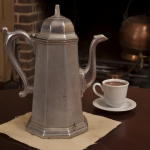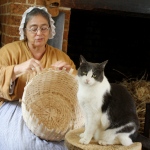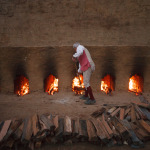Ebola quickly became the “buzz word” of 2014 but in the 18th century, smallpox was Public Health Issue #1. The disease was highly contagious, disfiguring, and often deadly. There were four known outbreaks of smallpox in the colonial capital during the 1700s as well as documented cases of malaria, dysentery, whooping cough—even scurvy. And you can bet that almost all of those patients turned to the apothecary for treatment.
In November, we took you inside what would be our modern-day pharmacy to give you a list of colonial remedies for the common cold, including hot chocolate. During our visit, we talked to Robin Kipps and her colleague Sharon Cotner who’ve been studying and teaching medical history for more than 30 years!
Robin has actual records that outline specific medical cases treated here in the 18th century. The apothecaries, also the city’s doctors, were on call 24-7. There’s evidence they made house calls in the middle of the night, on Sundays—even on Christmas. But how did they know what to prescribe to their patients? It may be hard to believe but medical research was considered “cutting edge” during this time. Various literature from that time period reveals written comparisons of colonial treatments to those of the “ancients” (Greeks and Romans). In essence, they viewed their practices as much more advanced. Physicians back in England and Scotland conducted various studies before compiling pharmacy books that were published as remedy references for all apothecaries. And very few would deviate from the books. As Robin shared, “Their reputations were everything.”
People from all walks of life have stopped into the Colonial Williamsburg Apothecary over the years—from a NASA healthcare worker to an ethno-botanist to an FDA employee passing through on vacation. While modern doctors and pharmacists seem to be able to relate to the prescriptions best, everyone can relate to some of the basic treatments for the common cold or flu.
 With all that knowledge, we wanted to know how often these women mix up their own remedies at home. Their answer? Never. Sharon says, “It’s because of what we know about modern medicine.” 25% of current medicines are still plant-based and use the same ingredients as our ancestors. And in the 1700s, they had no real way to measure the dosage and potency of all those homemade concoctions, whereas now we can depend on the FDA to regulate such concerns.
With all that knowledge, we wanted to know how often these women mix up their own remedies at home. Their answer? Never. Sharon says, “It’s because of what we know about modern medicine.” 25% of current medicines are still plant-based and use the same ingredients as our ancestors. And in the 1700s, they had no real way to measure the dosage and potency of all those homemade concoctions, whereas now we can depend on the FDA to regulate such concerns.
While they may not play pharmacists at home, these women answered guests questions who wanted to know everything from how to treat a toothache in the 18th century (thyme, oregano, and tobacco) to how heartburn was treated (chalk, just like modern-day Tums). Of course, every recommendation is followed with a disclaimer to always “check with your doctor first.”



Leave a Reply